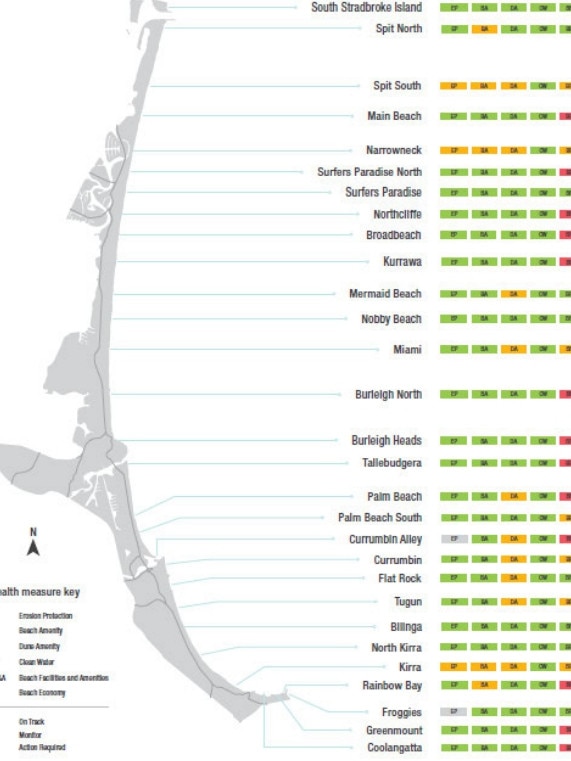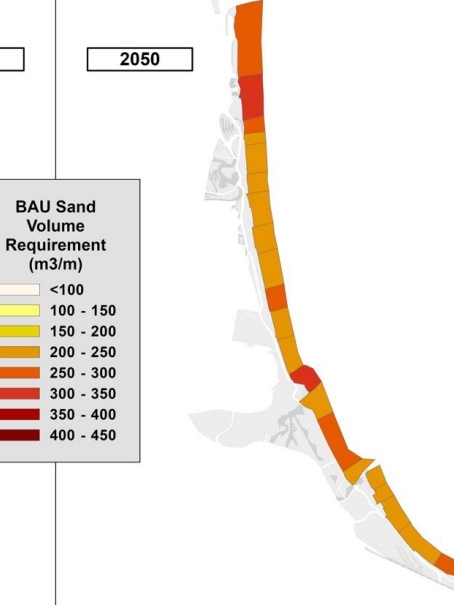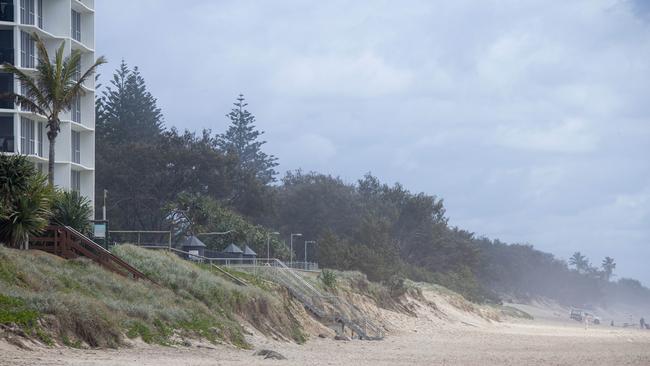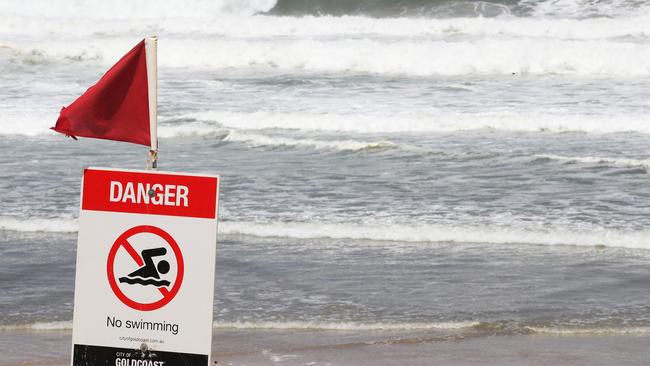Latest research warns up to half of the Gold Coast beaches could lose all their sand
Up to half of the Gold Coast beaches each year are in danger of losing all the sand due to storms and longer term impact of global warming, a new report warns.
Gold Coast
Don't miss out on the headlines from Gold Coast. Followed categories will be added to My News.
Up to half of the Gold Coast beaches each year are in danger of losing all the sand on them due to storms and longer term impact of global warming, a new report warns.
While research shows that the beaches are currently healthy and contributing $1.3 billion to the region’s economy, the measures being used to replace sand due to future erosion will not be enough and Gold Coast City Council must spend more money.
The bombshell report has caused a division among councillors with Deputy Mayor Donna Gates regarding it as “alarmist” while others believe it will prepare the Coast against future storm events.
“I’m feeling uncomfortable here. That this is quite inflammatory, this presentation,” Ms Gates told colleagues.
“This has always happened on our beaches. It’s not a new thing. We are not going to lose all our beaches.”

Senior officers provided photographs which showed Main Beach and Narrowneck during 2019, 2020, 2021 and 2022 had serious erosion events which would become more frequent.
“We have lost full use of beaches at these locations,” an officer said.
Transport committee chair Darren Taylor defended the reporting which showed the City had improve sand replenishment in recent years but faced future challenges.
“What we need to be doing is consider what will happen in the event of global warming,” he said.
The report said the Gold Coast Beaches Resilience Scheme (GBRS) would provide technical risk analysis for the City’s entire coastline in the short-term (10 years), mid-term (2050) and long-term (2100).
“The outputs will inform the identification of investigation areas and key projects to address coastal hazard risks,” the report said.
The value added from beach tourism to the economy was $3.38 billion in 2022 and is expected to rise to $3.95 billion in 2031, and $4.65 billion by 2041.

The total economic value of Coast beaches is estimated to be $1.3 billion in 2024, supported approximately 47,856 direct and indirect full-time equivalent jobs. By 2041 that number will grow to 65,890 direct and indirect full-time equivalent jobs.
“Without intervention, loss of beach width arising from short- and long-term coastal erosion risks will significantly reduce the economic contributions and lifestyle benefits of Gold Coast beaches which currently cater for an annual demand of more than 34,000,000 visits,” the report said.
“To manage these risks over the coming 50-100 years, several major coastal interventions and structures will be required.”
At least 15 million cubic metres of sand is available offshore which could stabilise beaches. Other options are artificial reefs and headlands.
“Results indicate that the City’s northern beaches have the highest demand for sand and should expect a large deficit by 2030 even when considering the potential outputs from the Surfers Paradise Sand Backpass,” the report said.

“The City is currently assessing if the available sand volumes will meet our future demands while exploring options to expand the current sand volume reserves spatial extent. The City cannot solely rely on sand reserves being sufficient to enable beach renourishment through planned and reactive measures in the long term.”
The City’s northern beaches (Narrowneck, Main Beach and The Spit) have been identified by multiple studies as the City’s most vulnerable to coastal erosion now and in the coming decades.
“Based on current conditions, there is a 20-50 per cent chance each year of complete loss of recreational beach space intermittently along the northern beache,” the report said.
“Without additional coastal management interventions, there is likely to be more frequent instances where the seawall is exposed, insufficient beach width to provide the required level of service for beach amenity, compromised access due to large scarping and a higher risk of erosion risk due to low sand volumes.”

KEY BEACH TAKEAWAYS FROM LATEST REPORTING
* At least 89 per cent of beaches are “on track’ for erosion protection and being monitored.
* Those with the worst erosion protection buffer are Narrowneck North and South, Miami and Burleigh North, Palm Beach and Palm Beach South.
* Those beaches requiring more sand by 2050 are in the north, and far south.
* In terms of “beach amenity” both Rainbow Bay and Kirra triggered a monitor status due to a negative trend in useable beach. Narrowneck and The Spit (North and South) have steep scarps following swell events.
* A new measure of “beach facilities and amenities” show 13 of the 29 beaches are “action required” needing infrastructure like showers.

* State government projections of rising sea levels could result in the permanent loss of between 15 to 50m of sandy beach width along the City’s entire coastline by 2100.
* The City says its current State of our Beaches are On Track for the 2023/24 shows improvement recorded for each measure category in the past 12 months.
More Coverage
Originally published as Latest research warns up to half of the Gold Coast beaches could lose all their sand





